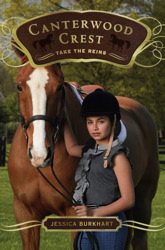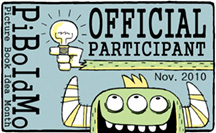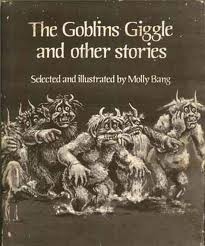When our family moved from San Francisco to Scottsdale the summer before first grade, my sister and I made friends with a brother and sister who lived about a half-mile away from us. Stephen was in kindergarten, his sister Libby was in third grade, and my sister was in fourth. Given the usual tendency of older siblings to vanish into their own world, Stephen (usually called Steve or Stevie) and I found ourselves thrown together for company, a lot. And it turned out to be hilarious fun. He was my very first best friend.

The fearsome foursome: (clockwise from left) Steve, Tiff, Libby, and me (the little disembodied balloon head).
The four of us played together every day during the summer, and every weekend during the school year, for five years. Our families took camping trips together, we built endless numbers of forts in the desert by our houses, we made movies with a Super-8 camera my sister was really good at using, movies that varied from wildly melodramatic to wildly funny (at least, we thought so).

Camelback Mountain (AP Photo/Matt York)
We sucked on rock salt pebbles sneaked from their water softener, played with their golden retriever, planned extravagant circuses and plays that we sometimes actually put on, spent hours and hours and hours in their swimming pool playing Marco Polo, spotted UFOs over Camelback Mountain, dealt with scorpions and rattlesnakes and jumping cacti (the typical hazards of our landscape), and admired our glamorous, laughing parents.
Golden eras don’t last forever, however, and divorce hit both families hard, as well as (a few years later) the untimely death of their mom, and, a few years after that, ours. But though my sister and I moved away from Arizona, we saw our buddies as often as we could when we visited our dad. Stevie and I weren’t great at keeping in touch (letter writing not being Stevie or my strong suit back then), but I loved seeing him at Christmas parties and catching up.
Yesterday, my sister called to tell me that Stephen had passed away, unexpectedly, a world away. I am still unable to quite believe it. He was 45, but I still see him as the wiry little five-year-old monkey who climbed on me the day I met him, calling me “Hey, baby, baby!” And the nine-year-old kid with the thickly-lashed clear blue eyes and goofy grin, always ready to play a prank on our sisters with me or find a new piece of wood to add to the forts, or sneak out in the middle of a desert night to hike around just for the fun of it, or ask embarrassing questions, or set up elaborate orange plastic Matchbox car racetracks with me for our Freakies cereal Freakymobiles. He was an early brother in my life, as well as a best friend, and the fact that he’s gone squeezes my heart.
All these memories made me think of those rare wonderful books in which authors get boy-girl friendships absolutely right. So I’m celebrating Stephen’s life by sharing some of my all-time favorite stories where a girl and a boy are best friends.
 From the Mixed-Up Files of Mrs. Basil E. Frankweiler
From the Mixed-Up Files of Mrs. Basil E. Frankweiler, by E.L. Konigsburg. Sure, Claudia and Jamie are brother and sister first, but they become best friends during their adventure running away to the Metropolitan Museum of Art and stumbling upon a mystery. Konigsburg gets the brother-sister dynamic perfect, with the kids calling each other on any whiff of fakey behavior and annoying each other as siblings do, while sticking by one another through every danger. When I read the book as a kid, Jamie reminded me of Stevie, both in personality and description. The illustrations even look like him.
 Claudia and Duffy
Claudia and Duffy, by Barbara Brooks Wallace. Back in print through the Authors Guild
backinprint.com program through
iUniverse, this is one of a series of books about two best friends who get through very amusing (and sometimes slightly more bittersweet) mishaps and misadventures together. I just loved the personalities of these two kids. They were comfortably rumpled, flawed and funny — like real best friends — and, in this book, are dealing with what happens when a friendship starts to strain its seams and move in other directions. Duffy is a precursor to Hassan in John Green’s
An Abundance of Katherines: amusing, a little lazy, and extremely appealing. I can’t remember if I identified with his insouciant laziness or wanted to be his friend, but Duffy was great.
Peter and Veronica, by Marilyn Sachs. Another goodie from childhood, this was part of a series, which began with
Veronica Ganz, in which the title character bullies Peter before they eventually become best friends. In
P&V, they’ve worked it out and have funny adventures. What I remember most about this book, oddly, is a scene where they’re waiting for a taxi, and Veronica ebulliently sings out something like, “Anna Maria Alberghetti in a taxi, honey!” instead of, “I’ll be down to get you in a taxi honey.” In Arizona, taxis were quite exotic. It’s out of print, but still terrific.
 The Big House
The Big House, by Carolyn Coman. I love love love this gothic/comic middle grade novel about another brother-sister pair of friends. Ivy and Ray get taken in by a nefarious rich lady while their parents are sent to jail for fraud (Ivy knows they are innocent), and are each other’s best friends on the grounds of her large, cold mansion. They are fiercely loyal to each other; Ivy protects younger brother Ray by hiding/washing his sheets when he wets the bed. Mostly, though, they have a blast playing together. I’m not sure I’ve ever seen an author capture the nature of childhood play (and fun and whimsy and goofiness and imagination) as perfectly as Coman does. It took me right back to the best parts of childhood.
Beyond the Mango Tree, by Amy Bronwen Zemser. This isn’t a lighthearted romp, but it’s an incredibly powerful story, and has one of my favorite characters in all of literature: Boima, a black Liberian boy who befriends a white American girl, Sarina, whose mother has “bad spells” and leaves her daughter outside tethered to a mango tree. Boima risks everything by climbing into the white family’s backyard and befriending Sarina. His generous heart and spirit are still very present with me, though I read this book years and years ago. While the subject matter might make it seem like a book for older middle-grade readers, I’ll never forget a librarian telling me that a third-grade girl who had never connected to a book before — never even finished one — devoured this novel, again and again. It turned her into a reader by speaking to her heart through this very special boy-girl friendship. It’s gone OP, which is a real shame.
 Ronia the Robber’s Daughter
Ronia the Robber’s Daughter, by Astrid Lindgren. One of the Flying Pig’s long-time favorite handsells, this is the story of the daughter and the son of rival robber barons who are forbidden to become friends — and so, of course, do. They’re bonded by their love of the woods. This is my favorite Astrid Lindgren book, I think; it’s beautifully written and less oddly quirky than
Pippi Longstocking. Before I am besieged with outraged comments, I loved reading the
Pippi books as a child but always felt a certain distance from them. Ronia was immediately in my heart. This book so often becomes a treasured family read-aloud for families who visit the bookstore.
I polled some of my bookselling friends and colleagues for the titles of their favorite boy-girl friendship books, and they reminded me of so many great books! The following are excellent suggestions from booksellers Melissa Posten (Pudd’nHead Books), Carol Moyer (Quail Ridge Books), Leslie Reiner (Inkwood Books), Sally Bulthuis (Pooh’s Corner), Francine Lucidon (The Voracious Reader), Dolores Rojas (Rabbit Readers Children’s Book Club), Heather Lyon (Lyon Books and Learning Center), Sue Carita (Toadstool Milford), Carol Chittenden (Eight Cousins), Janet Bibeau (Storybook Cove), Susan Fox (Red Fox Books), Rondi Brower (Blackwood & Brouwer Booksellers), Andrea Vuleta (Mrs. Nelson’s), Donna Gerardo (Tilbury House Publishers), Liz Szabla (Macmillan), Alison Hendon (Brooklyn Public Library), and Kenny Brechner (DDG Booksellers).
Great Boy-Girl Friendships in Books (in addition to the ones above)
Harriet and Sport in Louise Fitzhugh’s
Harriet the Spy
Jo and Laurie in Louisa May Alcott’s
Little Women
The two families of kids in Arthur Ransome’s
Swallows and Amazons
Gianna and Zig in Kate Messner’s
The Brilliant Fall of Gianna Z
John and Marisol in Ellen Wittlinger’s
Hard Love
Portia and Julian in
Gone-Away Lake and
Return to Gone-Away by Eleanor Estes
Jess and Leslie in Katherine Paterson’s
Bridge to Terabithia
Harry, Ron and Hermione in the
Harry Potter series
Zummy and Lorrol in Blue Balliett’s
Danger Box
Petra and Calder in
Chasing Vermeer, etc., by Blue Balliett
Miranda and Sal in Rebecca Stead’s
When You Reach Me
Zoey and Wheeler in Linda Urban’s
A Crooked Kind of Perfect
Beatrice and Jonah (aka Ghost Boy) in Natalie Standiford’s
How to Say Goodbye in Robot
Amanda and Leo in
11 Birthdays by Wendy Mass
Willie and Lizzie in Jordan Sonnenblick’s
Dodger and Me series
Raisa and Han in
Demon King and
Exiled Queen by Cinda Williams Chima
Ruthie and Jack in
The Sixty-Eight Rooms by Marianne Malone
Mildred and Jacob in
Me & the Pumpkin Queen by Marlane Kennedy
Mina and Michael in
Skellig by David Almond
Reynie, Kate, Constance, and Sticky in
The Mysterious Benedict Society by Trenton Lee Stewart
Jeremy and Lizzy in
Jeremy Fink and the Meaning of Life by Wendy Mass
Gabriel and Frita in
The Liberation of Gabriel King by K L Going.
Max and Lola in
Middleworld, by Jon & Pam Voelkel
Julia and Patrick in
Project Mulberry by Linda Sue Park
Nawat and Aliane in
Trickster’s Choice by Tamora Pierce
***
Got some other favorites? What makes you love them?
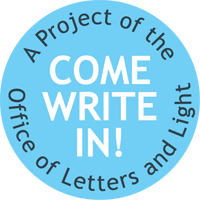 Want a great way to bring writers — a.k.a. readers, a.k.a. insatiable bookavores — into your bookstore? Host write-ins all November long by partnering with the world’s best writingpalooza, NaNoWriMo. There are materials for participating bookstores, including a window cling, a press release, several web badges and links for your store websites, even a list of suggested books for a display.
Want a great way to bring writers — a.k.a. readers, a.k.a. insatiable bookavores — into your bookstore? Host write-ins all November long by partnering with the world’s best writingpalooza, NaNoWriMo. There are materials for participating bookstores, including a window cling, a press release, several web badges and links for your store websites, even a list of suggested books for a display.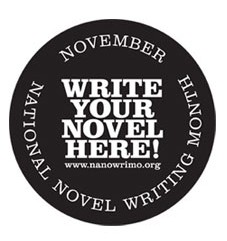 Bookstores can get involved by hosting write-ins — daytime or evening writing sessions where participants can bring their laptops, preferably drink gallons of coffee, and write their little hearts out in fellowship with their writing comrades. Since participants pretty much put their lives on hold for a whole month, these get-togethers break the solitude of NaNoWriMo and reassure writers that, even if they are totally insane to embark on this writing journey, they are not alone.
Bookstores can get involved by hosting write-ins — daytime or evening writing sessions where participants can bring their laptops, preferably drink gallons of coffee, and write their little hearts out in fellowship with their writing comrades. Since participants pretty much put their lives on hold for a whole month, these get-togethers break the solitude of NaNoWriMo and reassure writers that, even if they are totally insane to embark on this writing journey, they are not alone. They also have the coolest merch in their fundraising shop. There’s a new poster each year, new designs for tote bags and t-shirts and mugs, and — my favorite of all — merit badges. Real ones, like the kind your older sister had all over her Girl Scout sash. These aren’t for starting fires and doing community service, though; they’re for things like Caffeine Abuse, Word-Count Padding, Random Ending, and Victory.
They also have the coolest merch in their fundraising shop. There’s a new poster each year, new designs for tote bags and t-shirts and mugs, and — my favorite of all — merit badges. Real ones, like the kind your older sister had all over her Girl Scout sash. These aren’t for starting fires and doing community service, though; they’re for things like Caffeine Abuse, Word-Count Padding, Random Ending, and Victory. This year also marks the organization’s first Great NaNoWriMo Book Drive, which enlists the help of people from all over the country to collect used books, send them to be sold at an independent online bookstore, which donates the proceeds to the organization and literacy efforts. The book drive guide says it best: “To run this book drive, we have partnered with Better World Books, a socially conscious online book store that has diverted 33 million books from landfills and raised more than $8 million for its nonprofit literacy partners by selling used and new books online. Better World Books provides the online book drive portal, sends free supplies, transports the books, and offers guidance for book drive coordinators.” Bookstores might consider starting a book drive in their regions this year or next.
This year also marks the organization’s first Great NaNoWriMo Book Drive, which enlists the help of people from all over the country to collect used books, send them to be sold at an independent online bookstore, which donates the proceeds to the organization and literacy efforts. The book drive guide says it best: “To run this book drive, we have partnered with Better World Books, a socially conscious online book store that has diverted 33 million books from landfills and raised more than $8 million for its nonprofit literacy partners by selling used and new books online. Better World Books provides the online book drive portal, sends free supplies, transports the books, and offers guidance for book drive coordinators.” Bookstores might consider starting a book drive in their regions this year or next.


